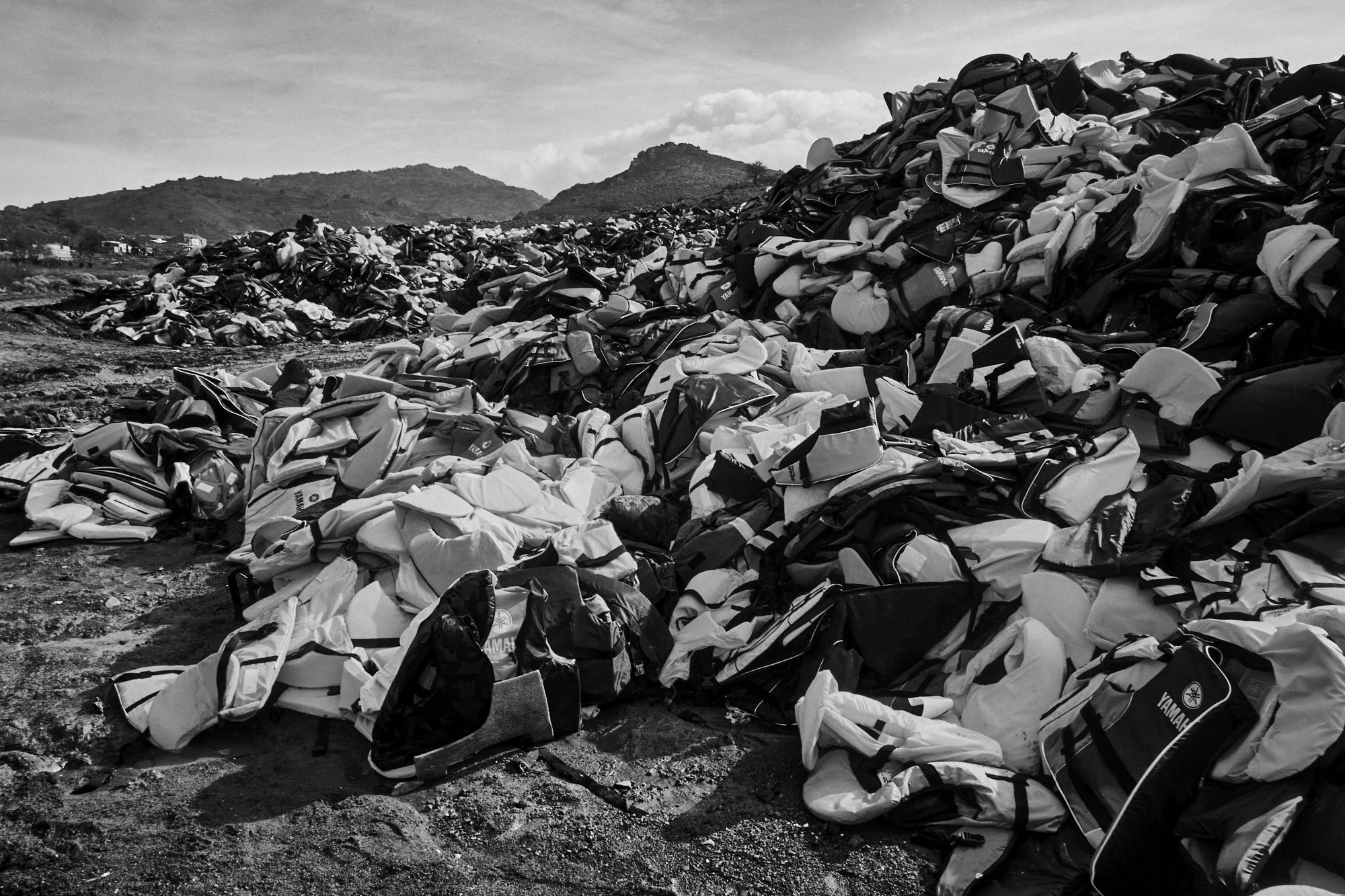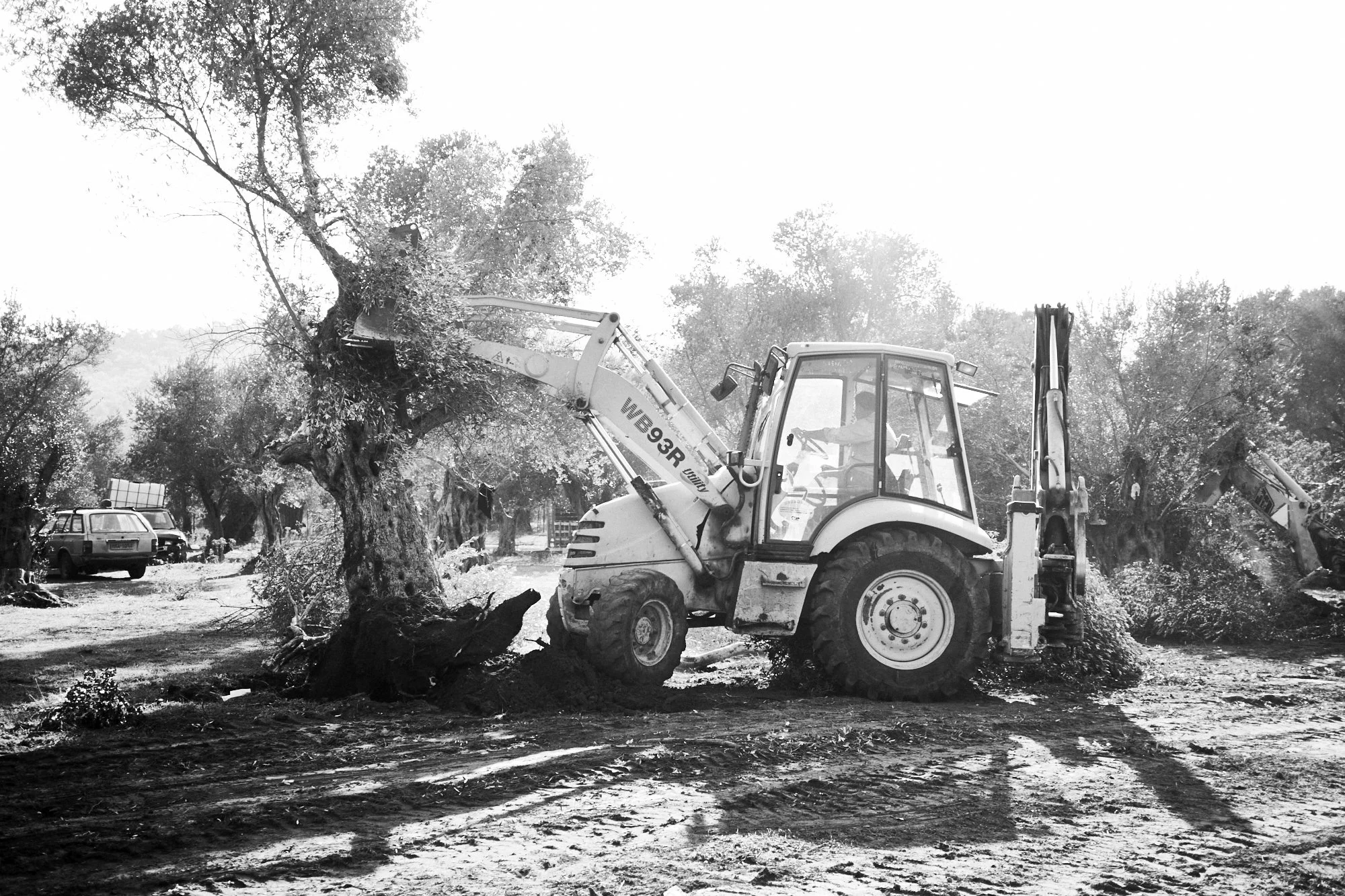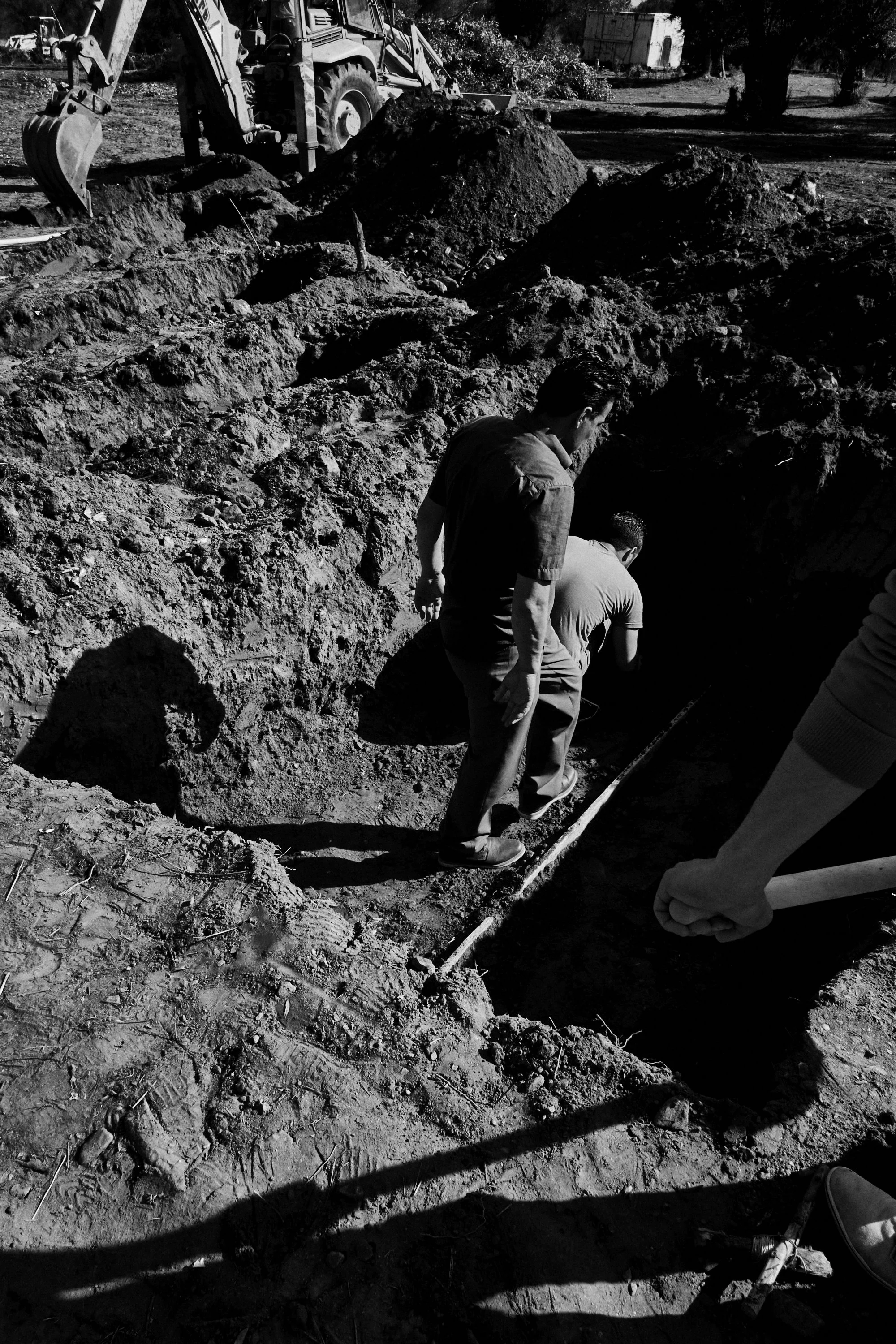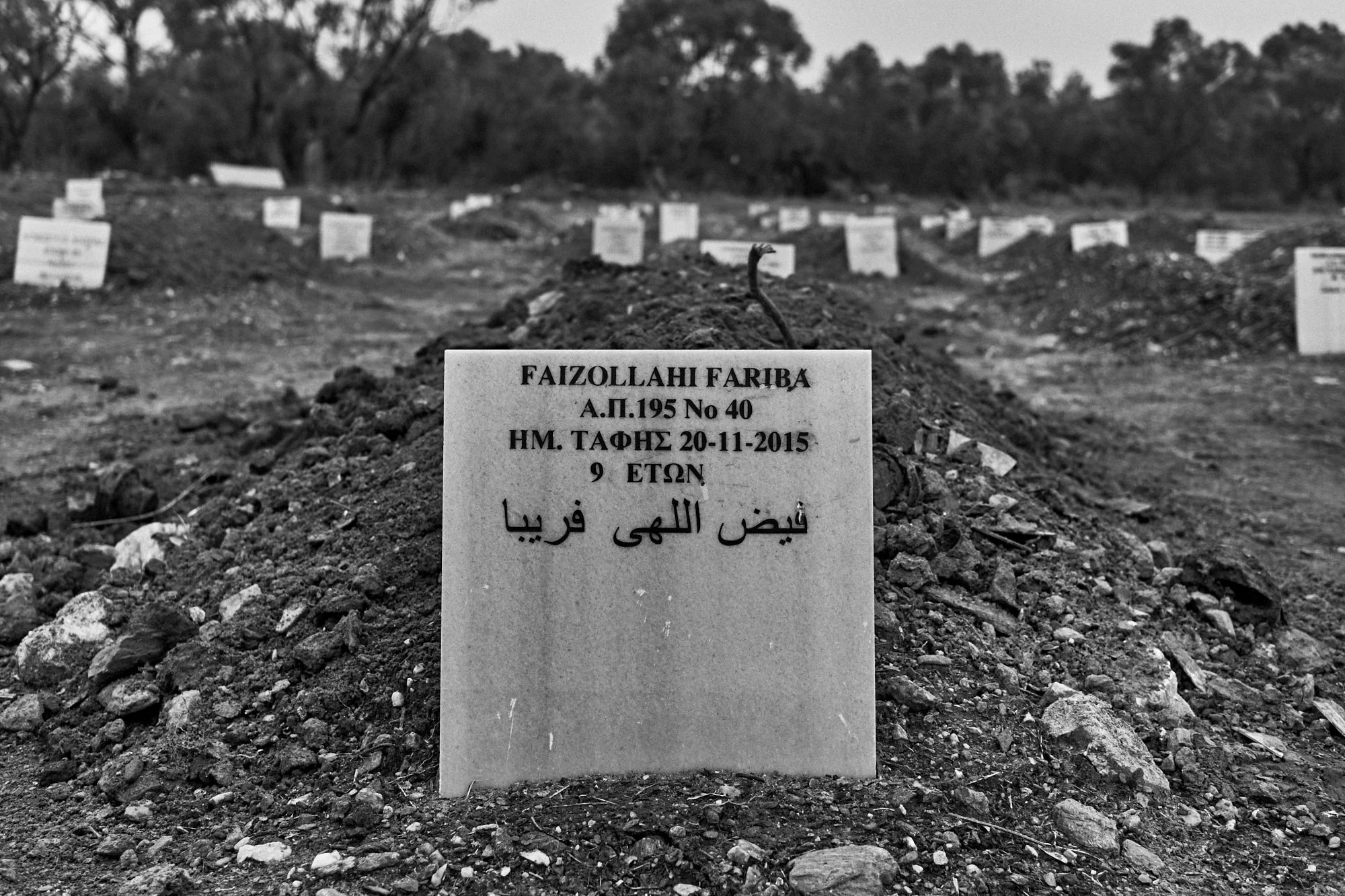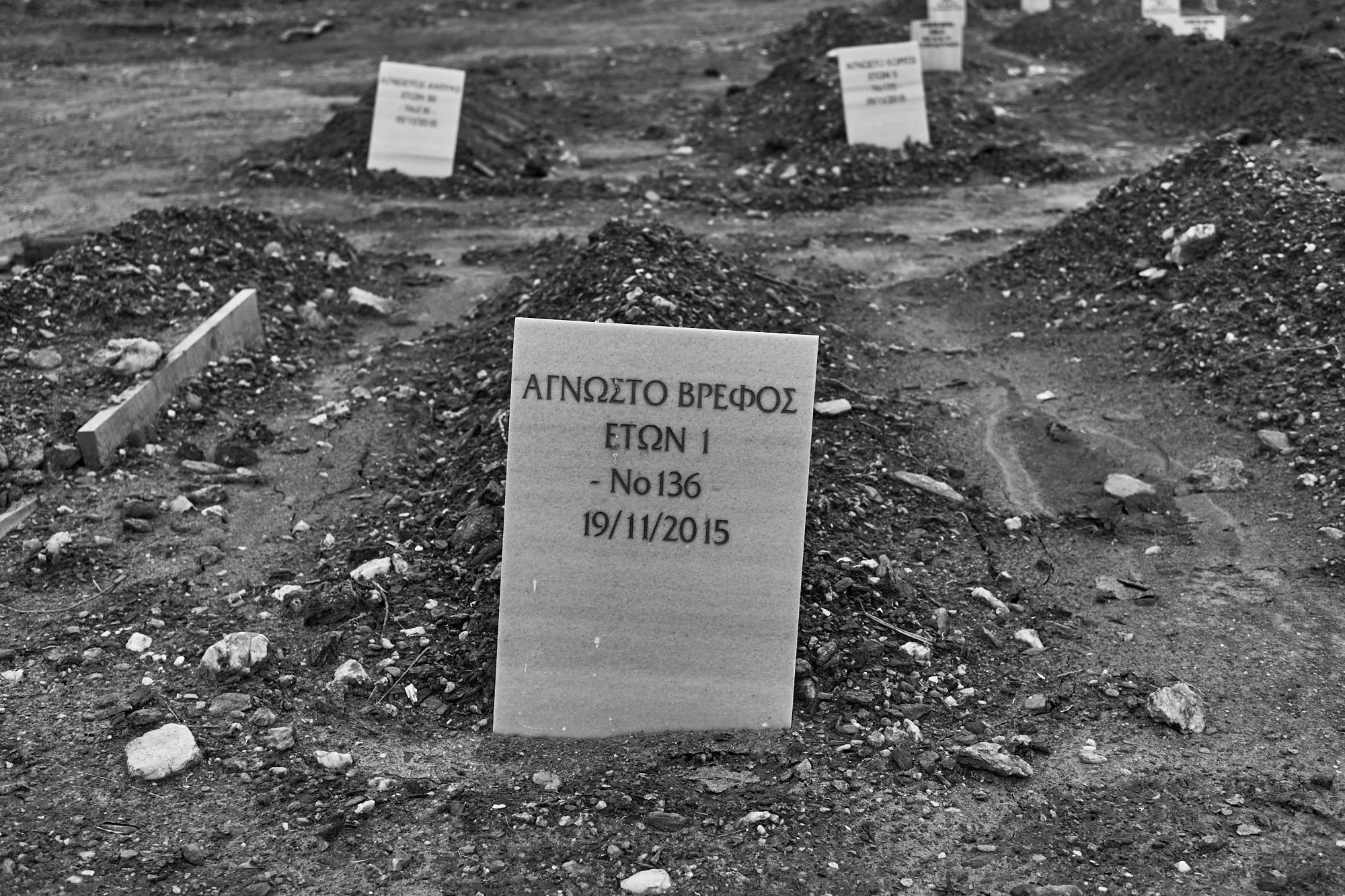Amongst the Olive Groves
November 2016. Kato Tritos.
Lesvos had become the main route for refugees arriving in Europe, alive or dead. The bodies had been there for more than a month, collected from the sea or washed ashore. The shipping container had been brought to the Mytilene hospital grounds to store them, as the morgue was full. While more than two hundred people survived the sinking of their boat, dozens had drowned.
Tension grew between those seeking a resting place for the dead and the local authorities. Some residents said they did not want more Muslims buried on the island, while others claimed the St. Panteleimon cemetery had simply run out of space.
A young man called Mohammed who had found refuge in Denmark, had hoped one day to welcome his relatives to his new found home. But upon hearing the tragic news of their deaths and the disputes over burial, he flew to Lesvos.
After much protest by campaigners, a local Christian landowner donated a plot of land in secret, hoping it would allow the dead to be buried with dignity. Out of these events, an unlikely group of volunteers came together, people of Islam and Christianity, united by grief, faith, and a sense of injustice. Together with Mohammed, they excavated an olive grove. The trees were cleared, the soil turned, and the digging began.
That day, four holes were dug in making five graves. One hole was made double for the husband and his wife; the other three were for their two children and their brother-in-law.
It was the middle of the night when the burials began. In darkness, under the light of car headlamps, tables were set out. The bodies were washed, then wrapped in white sheets, and finally placed in the ground by a Muslim cleric, one of the volunteers, there by chance.
While most of the volunteers soon left the island to return home, one man remained. Mustafa Dawa, a thirty-year-old from Egypt who had lived in Greece since his twenties, took on the unofficial role of washing, shrouding, and burying the remaining dead. In one week he completed fifty-seven burials, and on one day alone, eleven. The tragedy and horror of his work included burying headless victims and many children.
In time, marble headstones were placed, though many plaques bear only the word “ΑΓΝΩΣΤΟ” — Unknown. Each marker lists an identification number, the date the body was washed ashore, and an estimated age. Of more than eighty graves from that single sinking, just twenty-seven are named.
With war and unrest continuing in countries such as Afghanistan and Syria, refugees still attempt the crossing to Greece in search of sanctuary. Many do not survive. And so the secret burials in the secret graveyard amongst the olive groves continue.
